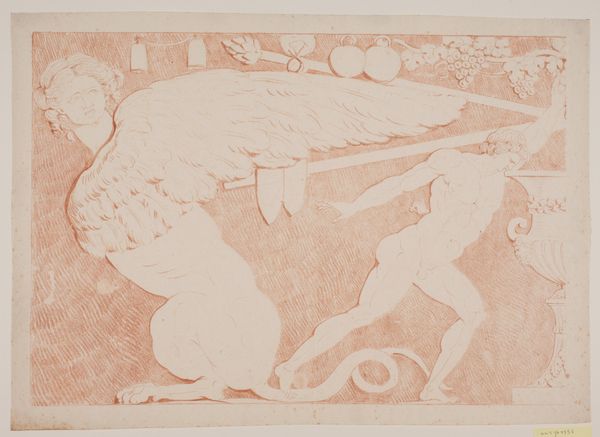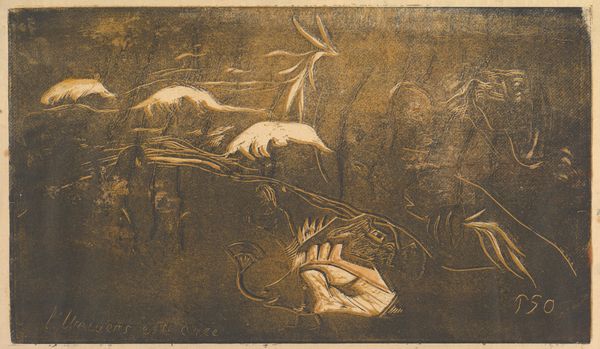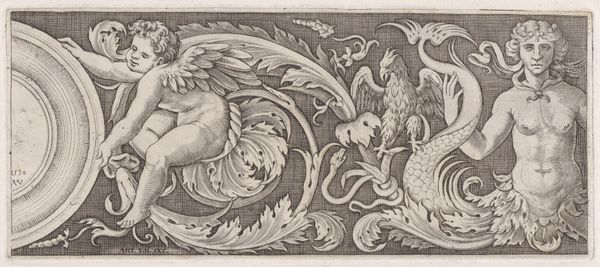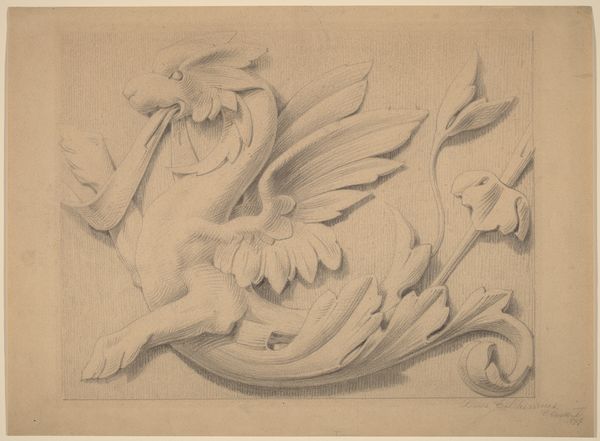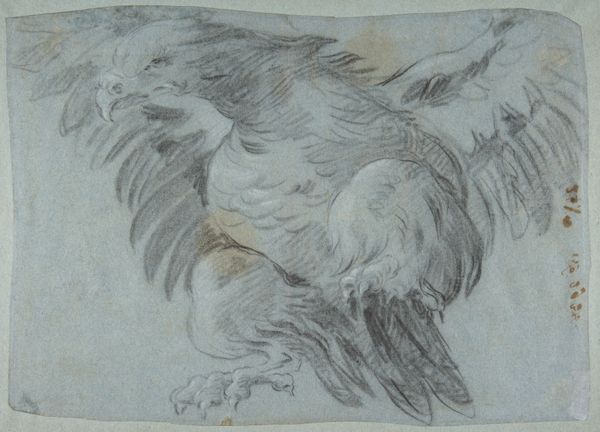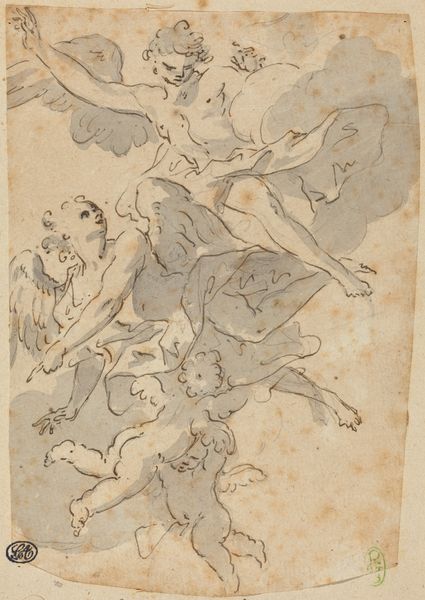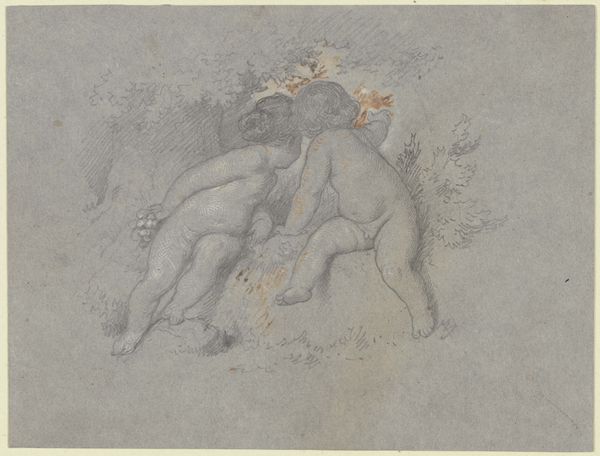
Dimensions: 370 mm (height) x 515 mm (width) (bladmaal)
Curator: Looking at this, I'm instantly reminded of that hazy, half-remembered feeling you get after reading a really good myth. It's called "Sphinx and Man (Satyr) Facing Right," made sometime between 1717 and 1776. Editor: Right. There's an incredible softness to this engraving – the way the lines feather and fade. Almost like faded tapestry, not a crisp, steel engraving at all, especially considering it's Neoclassical. Did Saly, the artist, perhaps want it to mimic a lost artifact, discovered covered in dust? Curator: It’s true, you can almost feel the dust of ages just looking at the rendering, or that chalky clay feel after digging your fingernails into the raw material itself. Saly's approach to this almost feels subversive. I get this sense of a forbidden, sensuous secret—even with a sphinx! He almost makes it inviting instead of ominous. Editor: But think about the sheer amount of labor involved! The creation of the plate itself—the engraving and etching process—demanded hours, days, possibly weeks. And the subject matter, those mythic figures! The grapes, the snake...they could've all been deliberately chosen as a challenge to established social norms around class, labor and luxury during that era. Curator: Exactly! But even within the technical constraint of the time, there is such palpable freedom of expression. Imagine creating this! The initial spark of imagination slowly finding its form. It feels almost rebellious, especially couched in the classicism so popular at the time. To depict this myth so humanely! Editor: Well, the "humanely" is interesting. Considering who this work was meant for... who did have access to see such mythological figures, and who labored to create them, that's really what stays with me here. It's about the process and its socioeconomic implications in relation to that neoclassical style that reigned. Curator: And yet... even through all the constraints of material, labor and socio-political forces...the picture remains incredibly human. The artist captured the emotional crux of this very human myth, and did it with sensitivity and tenderness. That makes it special for me, despite it all. Editor: A compelling insight. The layers of making are so enmeshed with layers of the culture of that time; it adds weight to a piece which might, at first glance, seem to float. It’s heavy and delicate.
Comments
No comments
Be the first to comment and join the conversation on the ultimate creative platform.
